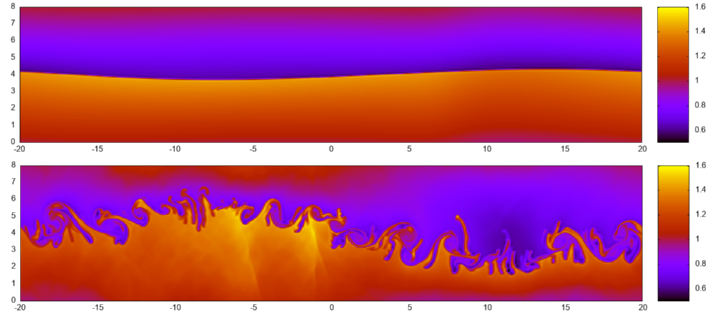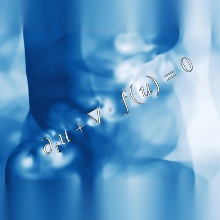Directly to
Team
Principal Investigators:
- Christian Klingenberg,
Julius-Maximilians-Universität Würzburg, Institute of Mathematics
Project staff:
- Lisa Lechner (Julius-Mayimilians-Universität Würzburg)
DFG Cooperation partner:
- Wasilij Barsukow (University of Bordeaux, France)
Abstract
Multi-dimensional conservation laws possess many more phenomena than their one-dimensional counterparts, for example turbulent flow with vortices and non-trivial stationary states. At the same time, computational resources are limited, and refinement is particularly costly for multi-dimensional simulations. Currently available numerical methods are only able to capture multi-dimensional phenomena upon excessive grid refinement. This is because they add numerical diffusion that is rooted in one- dimensional thinking, and also because the fluxes are computed using Riemann problems. For subsonic flow, the latter spoil the solution. We propose a new hybrid finite element – finite volume method that achieves upwinding by locally evolving continuous data, instead of solving a Riemann problem. Its degrees of freedom are cell averages/moments and point values located at cell interfaces, the lat- ter being shared between adjacent cells. The evolution of the averages is conservative, which means that the method is able to converge to the weak solution. The lowest (3rd) order method can be found in the literature under the name of Active Flux and has been shown to achieve superior results on coarse grids, because it is structure preserving. In our new method, the evolution of higher moments makes it arbitrarily high-order accurate. Currently, Active Flux methods are available for linear, or one- dimensional problems. This project aims at developing our new method for multi-dimensional systems of conservation laws, in particular the full multi-dimensional Euler equations and analyzing its structure preservation properties. This project will be done in close cooperation with Wasilij Barsukow / University of Bordeaux, France.



